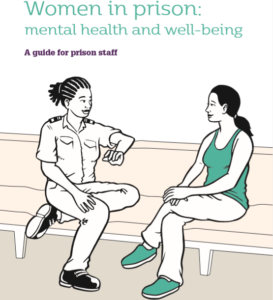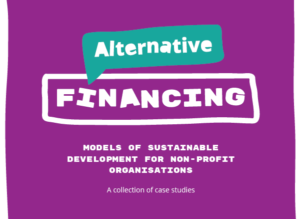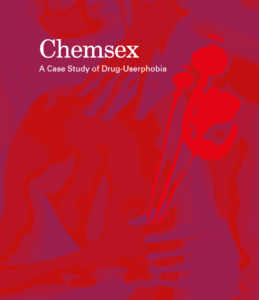Within EU-funded COVID-19 Solidarity Programme for the Eastern Partnership countries AFEW International prepares regular updates on the COVID-19 developments in the region – Armenia, Azerbaijan, Belarus, Georgia, Moldova, and Ukraine. What is the situation today? Please, check it here!
You can find previous updates in the COVID Corner on our website.
As of 28 April 2022:
Regional overview
Confirmed daily COVID-19 cases in 2022, between January 1, 2020 and April 27, 2022 in the 6 countries of the Eastern Partnership

Source: Sciences Po Media lab Coronavirus Country Comparator
Situation report Armenia

Image: Worldometer
Cases of COVID-19
— COVID-19 infections are decreasing in Armenia, with 1 infections per 100,000 people reported on in the last 7 days. That’s less than 1% of the peak — the highest daily average reported on February 7.
— There have been 422,855 infections and 8,622 coronavirus-related deaths reported in the country since the pandemic began.
Measures to contain the epidemic
— Armenia extends existing quarantine COVID-19 measures until June 20, 2022.
— Domestic measures: restrictions require a valid self-funded PCR test of maximum 72 hours or a vaccination through the Armed mobile application in order to enter public spaces. Employees follow similar requirements and can opt to present a negative test result every 14 days. Some categories of persons are exempt, including persons under the age of 18, pregnant women, and recovered. Face masks are mandatory in public spaces, including public transport. Businesses are permitted to reopen provided they maintain strict hygiene and social distancing requirements.
— International travel restrictions: international flights are allowed and land borders are open; but international arrivals must show either a negative PCR test result that is at most 72 hours old, or proof a full COVID-19 vaccination. Travelers without the required documentation must perform a paid PCR test on arrival and self-isolate until they receive a negative result.
Vaccine
— Armenia has administered at least 2,150,182 doses of COVID vaccines so far. Assuming every person needs 2 doses, that’s enough to have vaccinated about 36.3% of the country’s population.
Situation report Azerbaijan

Image: Worldometer
Cases of COVID-19
— COVID-19 infections are decreasing in Azerbaijan, with 1 infection per 100,000 people reported in the last 7 days. That’s less than 1% of the peak — the highest daily average reported on February 10.
— There have been 792,496 infections and 9,707 coronavirus-related deaths reported in the country since the pandemic began.
Measures to contain the epidemic
— Corona restrictions have been largely lifted. Public facilities are mostly open. However, restrictions on the use of public services remain in place for the unvaccinated. Foreign certificates are accepted as proof of full vaccination or recovery. It is obligatory to wear a mouth-nose protection in indoor areas and public transportation.
— At present, entry into the country is only possible by plane. However, as of 15 April 2022, the obligation to present a negative PCR test for COVID-19 is abolished for foreigners arriving in the Republic of Azerbaijan, and passengers of domestic flights will not be required to provide the document.
— Among the initiatives by Azerbaijan to respond to the coronavirus crisis, robust strategies were adopted to minimize its impact on society, including social protection of women and children, displaced persons, older population, people with disabilities and migrants.
— ADB’s COVID-19 Response in Azerbaijan is providing a $20 billion package to support its developing member countries in countering the severe macroeconomic and health impacts caused by COVID-19, including $2.5 billion in concessional and grant resources, as well as $2 billion earmarked for the private sector.
Vaccine
— Azerbaijan has administered at least 13,627,588 doses of COVID vaccines so far. Assuming every person needs 2 doses, that’s enough to have vaccinated about 68% of the country’s population.
— The Asia Pacific Vaccine Access Facility (APVAX) is ADB’s $9 billion vaccine initiative offering rapid and equitable support to its developing member countries as they procure and deliver effective and safe COVID-19 vaccines.
Situation report Belarus

Image: Worldometer
Cases of COVID-19
— COVID-19 infections are decreasing in Belarus, with 440 new infections reported on average each day. That’s 6% of the peak — the highest daily average reported on February 14.
— There have been 979,346 infections and 6,940 coronavirus-related deaths reported in the country since the pandemic began.
Measures to contain the epidemic
— On April 3rd, Belarus has lifted its covid-related borders restrictions, which were in place since October 2020. Now Belarus citizens can now freely cross the border, while foreign travelers can enter Belarus with a PCR test or vaccination proof. Citizens of Russia and Ukraine are exempted from this requirement due to the geopolitical situation.
— Schools and workplaces have no lockdown measures or recommendations. People are also not encouraged to stay at home or isolate.
—The Friedrich Ebert Foundation and SATIO report multiple repercussions of the pandemic on social and economic processes in Belarus, highlighting the ineffective measures taken by the government.
Vaccine
Situation report Georgia

Image: Worldometer
Cases of COVID-19
— COVID-19 infections are decreasing in Georgia, with 139 new infections reported on average each day. That’s 1% of the peak — the highest daily average reported on February 6.
—There have been 1,654,665 infections and 16,802 coronavirus-related deaths reported in the country since the pandemic began.
Measures to contain the epidemic
— Authorities in Georgia are enforcing minimal COVID-19 countermeasures as of April 6. Facemasks are mandatory on public transport and in indoor public spaces. Travelers from any country may enter Georgia provided they possess a certificate of vaccination or a negative result from a PCR test taken within the previous 72 hours.
— A complete report on government measures implemented in Georgia against COVID elaborates on the four stages from preventing to slowing, managing, and adapting to the coronavirus.
— Georgia’s government has published many resources with recommendations and guidelines on personal hygiene, self-isolation, pregnancy and breastfeeding, risk groups, media, catering and traveling.
Vaccine
— Georgia has administered at least 2,876,960 doses of COVID vaccines so far. Assuming every person needs 2 doses, that’s enough to have vaccinated about 38.7% of the country’s population.
Situation report Republic of Moldova

Image: Worldometer
Cases of COVID-19
— COVID-19 infections are decreasing in Moldova, with 60 new infections reported on average each day. That’s 1% of the peak — the highest daily average reported on January 31.
—There have been 516,864 infections and 11,487 coronavirus-related deaths reported in the country since the pandemic began.
Measures to contain the epidemic
— On 16 March 2022, Moldovan authorities removed most of the COVID-19 related bans. Moldovan authorities have removed most of the COVID-19 related bans. All public spaces, including markets, restaurants, bars, theatres, cinemas are operating as usual, without any limit on the numbers of guests. You should still wear a mask in all closed places, such as public transportation and supermarkets. No COVID-19 certificate is required in public spaces. Schooling is in-person.
— Due to war in neighbouring Ukraine, Moldova has announced a state of emergency, and its airspace is restricted. Since March 21st, there is a partial re-opening of Moldovan airspace for flights into and out of Romania from Chisinau International Airport.
Vaccine
Situation report Ukraine

Image: Worldometer
COVID-19 cases
— COVID-19 infections are decreasing in Ukraine, with 656 new infections reported on average each day. That’s 2% of the peak — the highest daily average reported on February 10. However, low rates of testing since the start of the war mean that there is likely to be significant undetected transmission and low vaccination coverage.
— There have been 4,999,984 infections and 108,359 coronavirus-related deaths reported in the country since the pandemic began.
Measures to contain the epidemic
On March 26, Ukraine has abandoned its quarantine zone system. During the state of war, employees are not obligated to vaccinate. Healthcare authorities are preparing for a spike in COVID cases, although it is difficult to obtain real data.
Effects of the war on the COVID-19 epidemic
— Mass displacement of people in Ukraine is likely to increase COVID transmissions. Refugees are particularly vulnerable to severe disease and death in the conditions created by war. Before the war, only 35% of the Ukrainian population had been vaccinated. As millions of refugees are entering Europe, they have better access to vaccination services, but at the same time, fall under the risk of undetected COVID transmissions.
— Before the war, Ukrainians had been relatively disciplined about wearing masks inside shops and restaurants and on public transport, but most people seem to have abandoned any protocol. As refugees have crammed on to trains and into station waiting halls, social distancing became impossible and there is barely a mask to be seen amid the crowds.
Vaccine
— Ukraine has administered at least 31,668,577 doses of COVID vaccines so far. Assuming every person needs 2 doses, that’s enough to have vaccinated about 35.7% of the country’s population.
Interesting reads



